
The Brachyceran infraorder Xylophagomorpha is a small group that consists solely of the family Xylophagidae, which presently contains subfamilies that were sometimes considered to be two small related families. Other obsolete names for members of this family include Exeretonevridae and Heterostomidae.
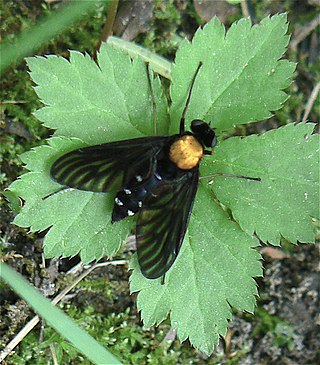
Chrysopilus is common, worldwide genus of predatory snipe flies. There are approximately 300 species in the genus, including fossil members that are sometimes found in amber.

Xylomyidae is a family of flies known commonly as the wood soldier flies. They are xylophagous and are associated with dead or dying wood.

Rhagionidae or snipe flies are a small family of flies. They get their name from the similarity of their often prominent proboscis that looks like the beak of a snipe.

Rhagio is a worldwide genus of predatory snipe flies. Several species in this genus are referred to as downlooker or down-looker flies because they sometimes perch on tree trunks in a head-down position. There are approximately 170 species. They can be distinguished from other rhagionids by the open anal cell on the wings and the lack of a kidney-shaped arista.
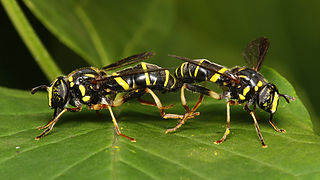
Spilomyia is a genus of hoverflies. Many species in the genus show Batesian mimicry of wasp models, including black and yellow patterns and modified antenna shape.
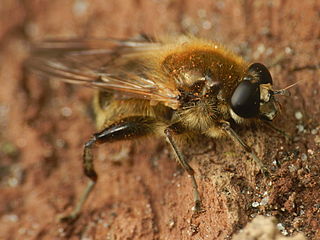
Brachypalpus is a genus of hoverflies, from the family Syrphidae, in the order Diptera. The head is triangular and produced well forwards and somewhat downwards. The thorax and abdomen with pile often rather long. The hind femur is swollen and with an obtuse spur apically and ventrally. The hind trochanters of male is spurred.
The larvae are of the rat-tailed type feeding on decaying sap under tree bark. Larvae live in decaying trees and logs. Larva and pupa have been described by Malloch.

Oxycera is a genus of flies in the family Stratiomyidae.

Pachygastrinae is a subfamily of flies in the family Stratiomyidae.
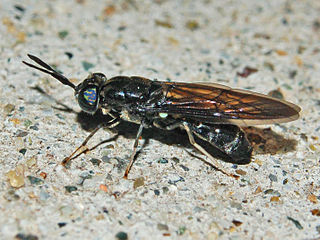
Hermetia is a genus of flies of the family Stratiomyidae.

Elassogaster is a genus of scavenger flies (Diptera) belonging to the family Platystomatidae. They are native to warm regions of Africa, Madagascar, Asia and Australia.

Solva is a fly genus in the family Xylomyidae, the "wood soldier flies".

Cyphomyia is a genus of flies in the subfamily Clitellariinae.

Xylomya is a fly genus in the family Xylomyidae, the "wood soldier flies".

Xylophagus is a genus of flies in the family Xylophagidae.

Allognosta is a genus of soldier flies in the family Stratiomyidae.
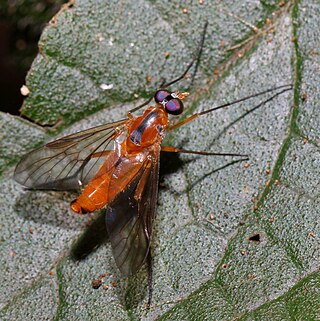
Suragina is a genus of flies in the family Athericidae.
Artemita is a genus of flies in the family Stratiomyidae.
















